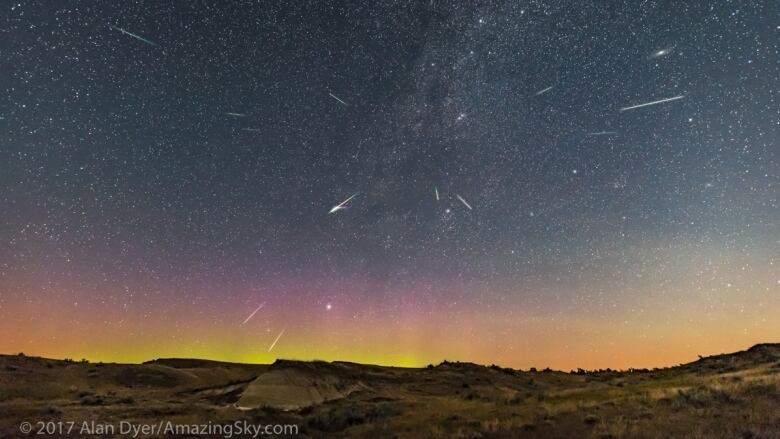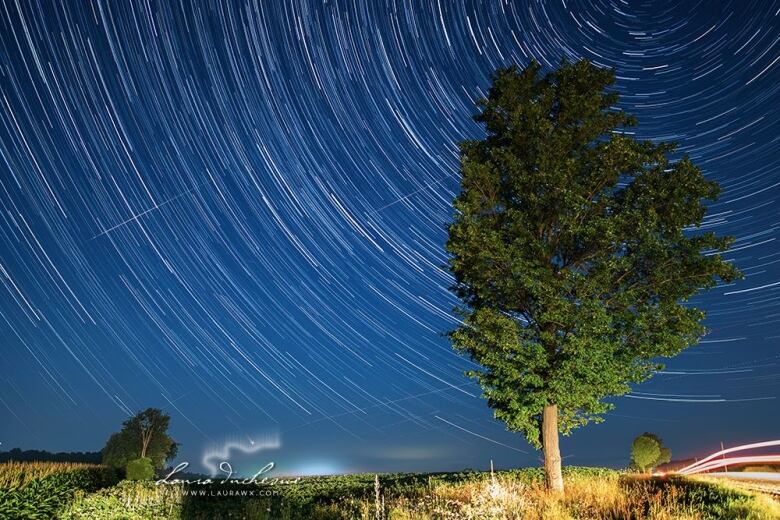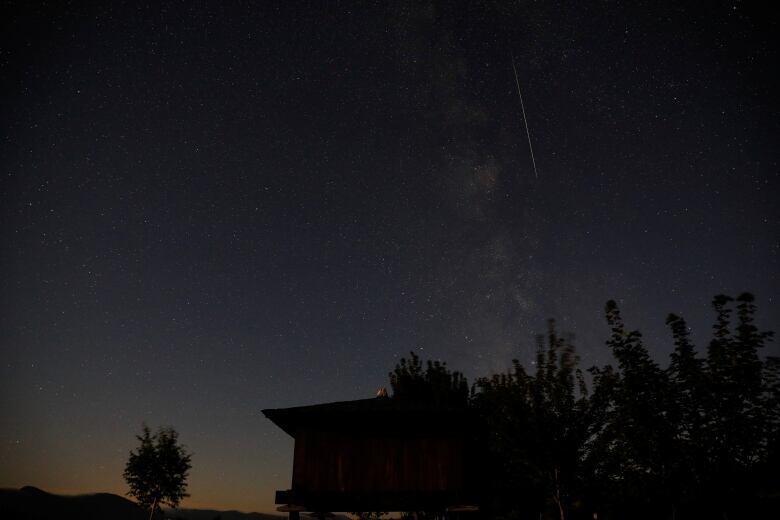Perseid meteor shower lights up weekend sky
Though the moon presented a challenge, many were able to spot some 'shooting stars'

This weekend, people around the globe had their necks craned, looking to the night sky in an effort to catch some "shooting stars" as the annual peak of the Perseid meteor shower took place.
If they had clear skies, they weren't disappointed: "oohs" and "aahs" were heard from many backyards, parks and beaches as brief streaks of light crossed the sky. Many reported fireballs, bright meteors that can sometimes rival the brightness of the moon.

While the Perseids are one of the year's best meteor showers, the moon was a bit of a problem this year: it was 70 per cent illuminated and, in Canada, rose around 11 p.m. making it difficult to see any faint meteors.


ThePerseidsoccur every year from mid-July to the end of August but typically peaks around August 12. Scientists at meteorshowers.org produced this interactive visualization on Earth travelling through Comet 109/P Swift-Tuttle's debris (you can click and rotate the view).
Anyone who has clear skies on the peak night can see upwards of around 100 meteors per hour in dark-sky locations.
In 2016, there was an outburst, where the number of expected meteors per hour increased to about 200 meteors per hour.
Perseid meteor, Milky Way, and a weird festive green airplane light trail over an old schoolhouse in Wabaunsee County, Kansas on 8/13/17. pic.twitter.com/6PfH6pnx6G
—@jasonkellerptPerseid Meteor last night over Great Sand Dunes National Park @KATVToddYak pic.twitter.com/7nzMb2eT7r
—@brianemfinger#Perseid #Meteor
Taken by Karoly Jonas on August 13, 2017 Apaj - Hungaryhttps://t.co/ykdyvtthYB pic.twitter.com/PuA4tjLm12
—@CaliaDomenicoWhile the shower is still ongoing, it is now subsiding.
The next big meteor shower is the Geminids which occur in December which can produce up to 120 meteors an hour at its height.












_(720p).jpg)


 OFFICIAL HD MUSIC VIDEO.jpg)
.jpg)



























































































